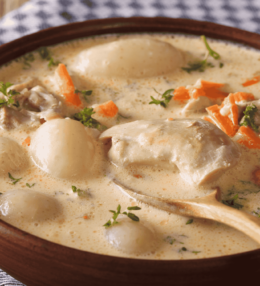
- View
Table of Contents
ToggleBrief Overview
When it comes to iconic Italian pizzas, there’s nothing quite like Pizza Napoletana, or Neapolitan pizza, as it’s known worldwide. Originating in Naples, this pizza is the gold standard for simplicity, authenticity, and tradition.
Made with just a handful of quality ingredients, Neapolitan pizza celebrates the art of balance, where the dough, sauce, and toppings harmonize into something truly special. If you’ve never experienced a real Neapolitan pizza, it’s not just about eating; it’s about savouring the soul of southern Italy in every bite.
What Is Pizza Napoletana?
Italian Pizza Napoletana is more than just a type of pizza, it’s a culinary symbol of Italy’s rich food culture. Known for its soft, slightly chewy crust with charred bubbles, this pizza stands apart with its distinct texture and flavor.
Unlike the crisp, heavily topped versions of pizza you might find elsewhere, the Neapolitan variety is minimalistic, focusing on the quality of each component.
The base is thin in the centre but fluffy and airy around the edges, thanks to a long fermentation process. The toppings are sparse, typically just San Marzano tomatoes, mozzarella di bufala (buffalo mozzarella), fresh basil, and a drizzle of olive oil, letting each ingredient shine.
When done right, the crust becomes the star, with a smoky aroma from the wood-fired oven and a satisfying chew that holds up the simplicity of the toppings.
Ingredients and Taste
What makes Pizza Napoletana stand out is its unwavering dedication to authentic, high quality ingredients. The dough is made from just flour, water, salt, and yeast, but its flavor is developed through a long, slow fermentation process, often taking over 24 hours. This gives the crust a light, slightly tangy flavor and a perfect texture, crisp on the outside, soft inside.
The sauce, made from San Marzano tomatoes grown in the rich volcanic soil near Mount Vesuvius, adds a natural sweetness with a hint of acidity. Topped with creamy buffalo mozzarella that melts into the sauce, each bite offers a balanced contrast between richness and freshness.
Fresh basil provides a fragrant touch, while a splash of extra virgin olive oil elevates the flavours with a subtle, fruity richness. The taste is simple yet sophisticated, highlighting the ingredients in their purest form without overwhelming the palate.
A Taste of History
The origins of Pizza Napoletana date back to the 18th century, when Naples was a thriving port city. It was during this time that local bakers began adding tomatoes, once thought to be poisonous, to flatbread. This new creation quickly gained popularity among the working class as an affordable, flavourful meal.
By the late 19th century, Pizza Napoletana had become a symbol of Neapolitan culture, and its reputation only grew when it was served to Italy’s Queen Margherita.
Legend has it that the queen so loved the combination of tomatoes, mozzarella, and basil, the colours mirroring the Italian flag that it became known as Pizza Margherita, one of the classic variations of Pizza Napoletana we enjoy today.
In 2017, the art of making Pizza Napoletana was recognized by UNESCO as an intangible cultural heritage, cementing its place in both Italian and global food history.
To this day, pizzerias in Naples follow strict guidelines to preserve the authenticity of this iconic dish, keeping alive centuries of tradition in every pie they bake.,
Pizza Napoletana (Neapolitan Pizza) Recipe
 Print
Print
Neapolitan Pizza, or Pizza Napoletana, is a traditional Italian pizza from Naples, characterized by a thin, soft crust topped with simple ingredients like tomatoes, mozzarella, fresh basil, and olive oil.
Ingredients
- 500g Tipo ’00’ flour (or all-purpose flour)
- 325ml water (room temperature)
- 10g sea salt
- 3g fresh yeast (or 1g active dry yeast)
- 10ml extra virgin olive oil
- 300g San Marzano tomatoes (crushed)
- 250g fresh buffalo mozzarella, torn into pieces
- Fresh basil leaves
- Extra virgin olive oil (for drizzling)
- Sea salt (to taste)
Instructions
- To begin, prepare the dough. In a large mixing bowl, dissolve the yeast in the room temperature water, allowing it to rest for a minute to activate. Slowly add in about half of the flour and mix gently using your hand or a wooden spoon until it forms a thick batter-like consistency. Let it rest for 10 minutes to absorb moisture fully, which will help create the perfect texture in the final dough.
- Next, gradually add the remaining flour and the salt to the mixture. Begin kneading the dough with your hands, either in the bowl or on a lightly floured surface. Knead for about 10 minutes, or until the dough becomes smooth and elastic. The dough should be soft but not sticky. If needed, add a small amount of flour during kneading, but be cautious not to over-flour as this will affect the texture.
- Once kneaded, form the dough into a ball and place it back into the bowl. Cover it with a damp kitchen towel or plastic wrap. Let it rise at room temperature for about 8 hours or until it doubles in size. For the best results, you can also refrigerate it overnight to develop more flavor, but remember to bring it back to room temperature before proceeding to the next step.
- After the dough has risen, divide it into four equal portions. Gently form each portion into a ball, being careful not to over-handle it, as this can knock out the air bubbles that are essential for a light, airy crust. Let the dough rest again, covered, for an additional 30 minutes. This second rise will help relax the gluten, making it easier to shape.
- Preheat your oven to its highest setting, ideally 250-300°C (482-572°F), or as high as it will go. If you have a pizza stone or steel, place it in the oven while it heats up—this will help create the iconic charred crust of a true Pizza Napoletana. Alternatively, you can use an overturned baking sheet.
- While the oven heats, prepare your toppings. Crush the San Marzano tomatoes by hand or with a fork to create a rustic, chunky sauce. Season lightly with sea salt. For the most authentic flavor, avoid adding too many spices or sugar—this pizza relies on the purity of the ingredients.
- Now, stretch each ball of dough into a thin, round pizza. To do this, place the dough on a lightly floured surface and, using your hands, gently press the dough from the centre outward, leaving a slightly thicker edge for the crust. Avoid using a rolling pin, as it will flatten the dough and remove the air bubbles needed for the ideal texture.
- Once stretched, transfer the dough to your hot pizza stone or baking sheet. Spread a thin layer of the tomato sauce onto the dough, followed by pieces of buffalo mozzarella. Drizzle with a small amount of olive oil and add a few fresh basil leaves. Bake for 7-10 minutes, or until the crust is golden with charred spots, and the cheese is melted and bubbling.
Nutrition Information:
Yield:
4Serving Size:
1 Amount Per Serving: Calories: 252Total Fat: 20gSaturated Fat: 9gTrans Fat: 0gUnsaturated Fat: 9gCholesterol: 49mgSodium: 1514mgCarbohydrates: 4gFiber: 1gSugar: 3gProtein: 15gThis data was provided and calculated by Nutritionix. This is a general estimate provided for informational purposes only.
You May Also Like






